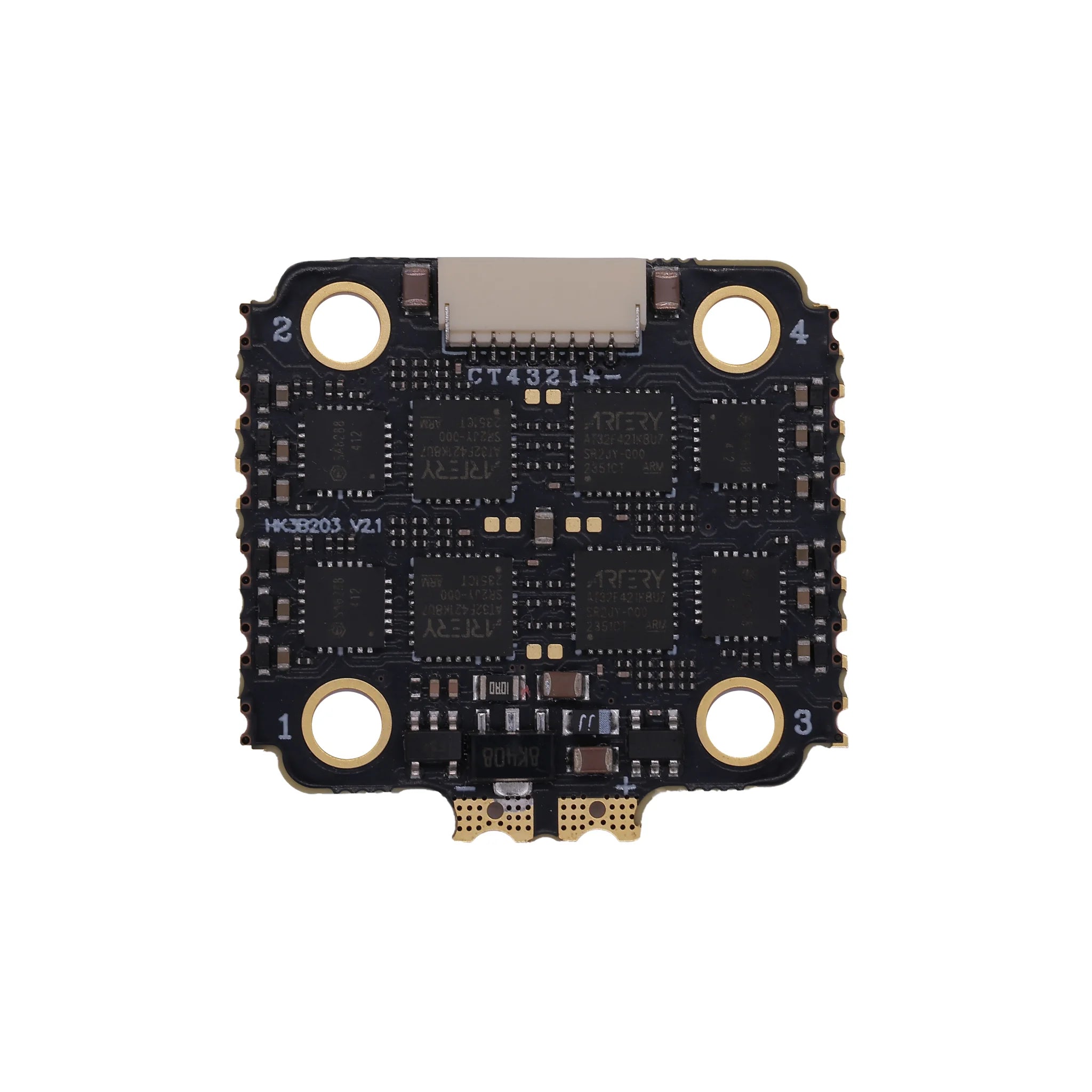At NZFPV, we’re excited to bring you an immersive unboxing of the HAKRC 8B50A 50A 2-6S 4-in-1 BLHeli_S ESC, a top-tier choice for FPV drone enthusiasts. This blog post walks you through the unboxing experience and shares essential tips for selecting the perfect electronic speed controller (ESC) for your drone build. Whether you’re a freestyle pilot or a racing enthusiast, understanding ESC specifications is key to achieving smooth, reliable flights.
What Does an ESC Do in an FPV Drone?
An Electronic Speed Controller (ESC) translates your remote control commands into motor actions. Here’s the process:
- Your remote sends instructions to the receiver.
- The receiver relays these to the flight controller.
- The flight controller stabilizes the drone’s attitude and sends commands to the ESC.
- The ESC adjusts the motor’s speed for precise control.
If you’ve flown older drones like the F450, you’ll recall that single ESCs were standard, with one ESC strapped to each motor arm and connected to the motor. Single ESCs are still used in boat models, car models, and fixed-wing aircraft. However, modern FPV drones favor 4-in-1 ESCs like the HAKRC 8B50A. These are lighter, more visually appealing, and centrally mounted for better protection.
Immersive Unboxing Experience: Exploring the HAKRC 8B50A ESC
Let’s dive into the unboxing of the NZFPV HAKRC 8B50A 4-in-1 ESC, showcasing each component step-by-step to give you a hands-on feel of this premium ESC:
Step 1: Revealing the ESC and Mounting Holes
As we open the NZFPV-branded box, we pull out the HAKRC 8B50A ESC, securely packed in protective foam. Right away, you’ll notice its versatile design, supporting two mounting hole patterns: 30.5x30.5mm and 20x20mm. This flexibility ensures it fits a wide range of FPV drone frames, from compact racers to larger freestyle builds.

Step 2: Inspecting the PCB Thickness
Next, we examine the 6-layer PCB, a hallmark of the HAKRC 8B50A’s durability. Using a caliper, we measure the board’s thickness at 1.5mm. The six-layer design, combined with 2oz thickened copper and a resin plug-hole process, minimizes heat and boosts efficiency, ensuring reliable performance during intense flights.

Step 3: Measuring the Dimensions
We take out a ruler to measure the ESC’s dimensions: 37.2mm long and 43.2mm wide. This compact size makes it ideal for fitting into tight drone frames while maintaining a lightweight profile for optimal flight performance.

Step 4: Showcasing the Hardware Components
Now, let’s zoom in on the high-quality hardware. The ESC features imported Japanese MOSFETs and Murata capacitors, paired with an FD6288Q IC driver. These components ensure high-current resistance, stable power delivery, and effective noise filtering, built to withstand rigorous FPV conditions.
Step 5: Examining the Solder Pads
Turning to the solder pads, we notice their large, metallized design, wrapped around the board’s edges. These oversized pads make soldering straightforward and secure, preventing detachment even under stress, ensuring long-lasting connections for your drone build.

Step 6: Exploring the Accessories
Finally, we unpack the included accessories, each designed for ease and reliability:
- 12AWG Power Cables: Rated for up to 200°C, ensuring safe handling of high currents.
- 35V Capacitor: Enhances power stability.
- Wiring Harness: Simplifies connections to your flight controller and motors.
- XT60 Connector: A standard, reliable plug for battery connections.
- Two Silicone Pads: One for 20x20mm mounting and another for 30.5x30.5mm, each in a distinct color for easy identification.

How to Choose the Right ESC for Your FPV Drone
Selecting the perfect ESC requires matching its specs to your drone’s components. Let’s break it down using the HAKRC 8B50A and a sample motor, the Mifeng V2207 V3 1750KV, as an example:
1. Check Motor Current and ESC Rating
-
Motor Current: The Mifeng V2207 V3 1750KV has a maximum current of 37.9A, rounded to 40A for safety.
-
ESC Current: Choose an ESC with a continuous current rating 10-20% higher than the motor’s max current. The HAKRC 8B50A’s 50A continuous rating (40A x 1.2 = 48A) provides a safe buffer.
-
Peak Current: The 60A peak rating supports short bursts (5-10 seconds) for high-performance maneuvers.
2. Verify Voltage Support
-
The ESC must support your battery’s voltage. The HAKRC 8B50A supports 2S-6S LiPo, compatible with batteries having 2 to 6 cells (e.g., a 4S battery with 4 cells in series).
3. Understand ESC Protocols
ESCs use different signal protocols:
-
PWM: An analog protocol that converts throttle input to percentages (e.g., 1%, 2%). It’s less precise and noisier.
-
Dshot: A digital protocol for superior accuracy. The HAKRC 8B50A supports Dshot150/300/600, where the numbers indicate signals per second (e.g., 150 signals/second for Dshot150), ensuring compatibility with modern flight controllers.
4. Confirm Mounting Compatibility
-
Ensure the ESC’s mounting holes match your frame. The HAKRC 8B50A supports 20x20mm and 30.5x30.5mm, offering flexibility for various drone builds.
5. Evaluate Firmware and Build Quality
-
Firmware: The HAKRC 8B50A uses BLHeli_S, which supports easy tuning via software.
-
Build Quality: Look for premium components (e.g., Japanese MOSFETs, Murata capacitors) and robust PCB designs. Consider brand reputation and customer reviews to balance performance and budget.
Conclusion
The NZFPV HAKRC 8B50A 4-in-1 ESC is a durable, efficient, and versatile choice for FPV drone builds. Our immersive unboxing highlighted its premium components, from the dual mounting holes to the high-quality accessories, while our guide to ESC selection—covering current, voltage, protocols, and mounting—helps you make informed decisions. Visit NZFPV to grab your HAKRC 8B50A and elevate your FPV experience!





